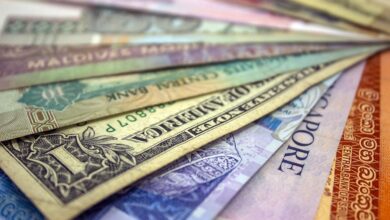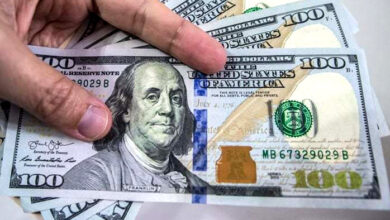The US and the Taliban have made progress on Afghan reserves, but there are still a lot of gaps.

Washington, Kabul (Reuters) –Three people familiar with the talks said that officials from the U.S. and the Taliban have talked about putting billions of dollars from Afghanistan’s central bank reserves held abroad into a trust fund. This could be a sign that efforts to ease Afghanistan’s economic crisis are making progress.
Two of the sources say that there are still big problems between the two sides, such as the Taliban’s refusal to replace the bank’s top political appointees, one of whom is under U.S. sanctions along with a number of the movement’s leaders.
Some experts said that this would help restore trust in the institution because it would keep the Islamist militant group, which took power a year ago but is not recognised by other countries, from messing with it.
A Taliban government source who spoke on the condition of anonymity said that the Taliban don’t disagree with the idea of a trust fund, but they do disagree with a U.S. plan for a third party to control the fund that would hold and give out the returned reserves.
A U.S. source who didn’t want to be named in order to talk about the matter said that the U.S. has been in talks with Switzerland and other parties about setting up a mechanism that would include a trust fund. Money from the fund would be given out with the help of an international board.
A U.S. source said that the Afghanistan Reconstruction Trust Fund, which is managed by the World Bank and was set up to get foreign aid for Kabul’s development, could be a model.
Shah Mehrabi, an Afghan-American economics professor who is on the supreme council of the Afghan central bank, said, “No agreement has been reached yet.”
The U.S. State Department and Switzerland’s Federal Department of Foreign Affairs both refused to comment, and the Afghan central bank did not respond to requests for comment.
Since the Taliban took over Kabul last August and U.S.-led forces withdrew after 20 years of fighting the militants, about $9 billion in reserves have been kept outside of Afghanistan, with $7 billion of that in the United States.
Foreign governments and rights groups have said that the Taliban violated human rights by killing people without a trial during and after the insurgency. Since regaining power, the movement has also limited the rights of women.
Before the group is officially recognized, the rest of the world wants it to do better on women’s rights and other rights.
The Taliban have said they will look into killings that are said to have happened and are working to protect Afghans’ rights to education and free speech within the limits of Islamic law.
‘POSITIVE MOVE’
Mehrabi, a Taliban official and senior diplomat, said that during talks in Doha last month, the Taliban gave U.S. officials their answer to the U.S. plan for a way to free up Afghan assets.
Experts warned that releasing the money would only help for a short time and that Afghanistan needed new ways to make money to replace the direct foreign aid that paid for 70% of the government budget before it stopped after the Taliban took over.
But some people saw the exchange of ideas as a glimmer of hope that a system could be made that would allow the Afghan central bank to release funds without the Taliban being able to get to them.
When the Taliban broke their promise to open high schools for girls in March, Washington cancelled meetings in Doha. This made it hard to talk about the assets and other issues.
Mehrabi said that it was a good sign that the Taliban did not reject the U.S. offer, but that he had not seen the Taliban’s counteroffer.
The Taliban official said that the group was willing to let a contractor hired by the State Department check that Afghanistan’s central bank was following anti-money laundering rules and that experts would be able to go to Afghanistan to do this.
But the Taliban were worried that the U.S. plan could lead to a second central bank, the official said, and they weren’t ready to get rid of top political appointees like deputy governor Noor Ahmad Agha, who is on the U.S. list of people who support terrorism and is therefore banned from entering the country.
The U.S. source said that the proposed trust fund would not be like having a second central bank.
The First Track
Negotiations have mostly been about a first release of $3.5 billion that U.S. President Joe Biden told the Federal Reserve Bank of New York to set aside “for the benefit of the Afghan people” out of $7 billion in Afghan reserves.
The other $3.5 billion is being fought over in lawsuits against the Taliban because of the attacks on the United States on September 11, 2001, but the courts could decide to give those funds to the Taliban as well.
In February, U.S. Special Representative for Afghanistan Tom West said that funds set aside by Biden could be used to re-finance a reformed central bank and a banking system that has stopped working.
Afghanistan’s economy went into a freefall after the Taliban took over. The central bank’s foreign reserves were frozen, Washington and other donors stopped giving money, and the US stopped sending hard currency to Afghanistan.
The banking system almost fell apart, and the Afghani, the country’s currency, fell sharply.
The World Bank says it has gotten better, but there are still not enough dollars and Afghanis. Drought, the COVID-19 pandemic, and Russia’s invasion of Ukraine all contributed to high unemployment and rising prices, which made the humanitarian crisis worse.
The United Nations says that millions of Afghans will go hungry again this winter.
Experts said that giving the central bank the money that was being held by foreigners would help end the crisis.
“You must have a central bank that controls the value of the currency, sets prices, and makes sure there is enough money for imports. No one will eat, “said Graeme Smith, who works for the International Crisis Group as a senior consultant.





